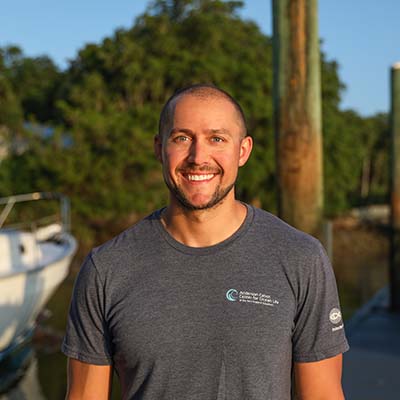Merging technologies and supervised classification methods to quantify capture behavior on hook-and-line
By Ryan J. Knotek, Edward J. Brooks, Lucy A. Howey, James G. Gelsleichter, Brendan S. Talwar, Maggie M. Winchester, Lance K.B. Jordan, Sean Williams, Mark E. Bond, Annabelle M.L. Brooks, Oliver N. Shipley, Trevor Bacon, Jeff R. Kneebone, John W. Mandelman
Originally published in Journal of Experimental Marine Biology and Ecology in October 2022

Abstract
Animal behavior varies in response to capture between/within species and fisheries, and its expression may contribute to incidental mortality when behaviors result in physiological ramifications that cannot be resolved. However, this relationship between capture behavior and animal health is poorly understood, and it remains a logistical challenge to evaluate behavior during capture. We describe an experimental technique that characterizes and quantifies capture behavior in hook-and-line fisheries. This technique includes (1) simultaneously monitoring the behavioral response to capture with accelerometers and cameras, (2) characterizing behavior from video footage and linking discrete behaviors to acceleration data, and (3) predicting behavior based solely on acceleration data using an ensemble of supervised classification methods. We captured oceanic whitetip sharks, Carcharhinus longimanus, with experimental (hook-and-line) gear to test these techniques (n = 38 capture events), with capture durations ranging from 4 to 68 min. In all, 145,589 tri-axial acceleration observations were collected across these events, including simultaneous video footage (six hours total) from 10 capture events. Three discrete capture behaviors were characterized: steady swimming, a high-energy response consisting of thrashing and burst swimming, and a loss of body orientation while hanging motionless from the gear. The latter two behaviors can lead to physiological stress if exhibited for prolonged periods. Our trained ensemble of supervised classification methods successfully predicted behaviors from acceleration data with up to 95.2% accuracy. This technique provides a better understanding of the behavioral response to hook-and-line capture and, if paired with health or fate assessments, can characterize the influence of behavior on mortality. Our technique also provides a method for predicting behavior based on acceleration data alone, which can be more feasible to collect across the spectrum of fishing conditions and practices within a fishery. Such information will assist in understanding how species respond to capture on hook-and-line gear and in the formulation of species- and fishery-specific strategies for mitigating mortality.
Full Text




